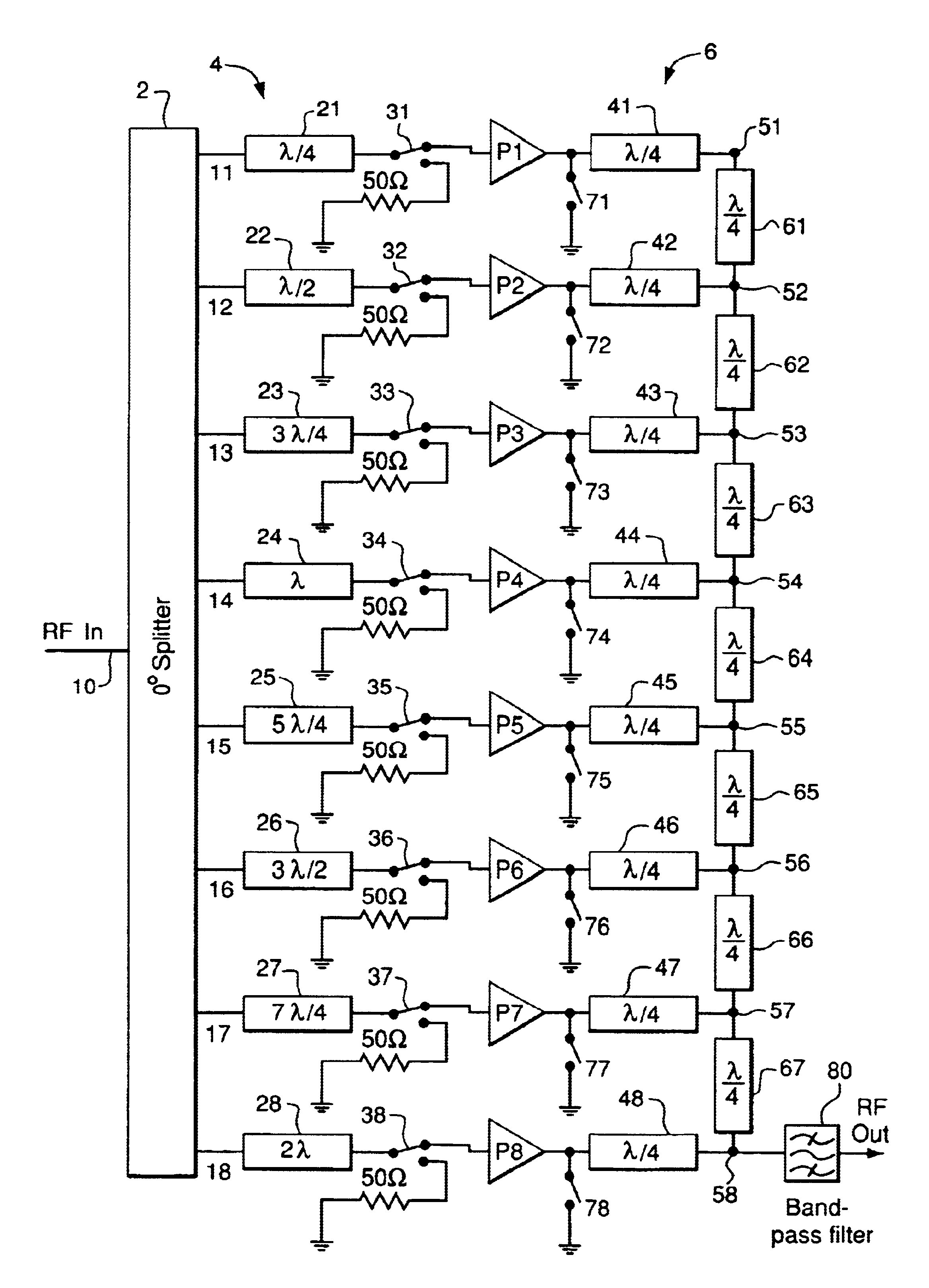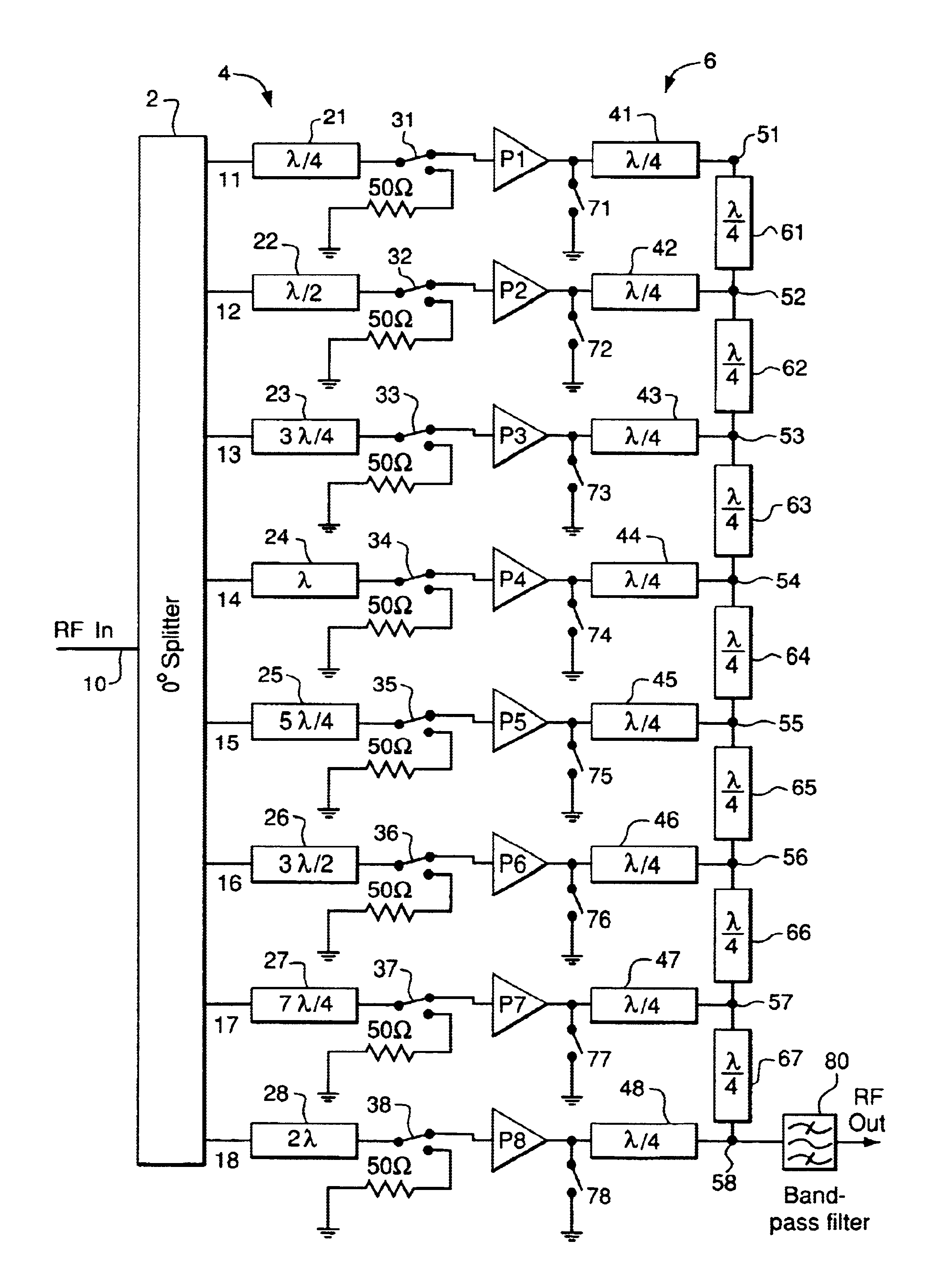Signal combiner, a signal splitter and a circuit using a combiner and a splitter
a signal combiner and combiner technology, applied in the direction of waveguides, waveguide type devices, gated amplifiers, etc., can solve the problems of amplifiers now becoming load, amplifiers losing their original contribution, and reducing the effect of failure of devices connected to the input of the signal combiner
- Summary
- Abstract
- Description
- Claims
- Application Information
AI Technical Summary
Benefits of technology
Problems solved by technology
Method used
Image
Examples
Embodiment Construction
The arrangement shown in the accompanying FIGURE comprises a eight way 0° splitter 2, a phase compensation section indicated generally as 4, eight power amplifiers P1 to P8 and an eight way combiner indicated generally as 6. The circuit is designed to amplify an RF input having a carrier frequency F0 which has a wave length δ0 in a transmission line. The splitter 2 accepts an RF signal at its input 10 and splits this equally in amplitude and without introducing phase shifts between its eight outputs 11 to 18. The first output is connected to a first delay line 21 introducing a phase delay of λ4.
The second output 12 is connected to a delay line 22 introducing an delay of 2λ4.
The third output 23 is connected to a third delay line 23 introducing a delay of 3λ4,
and so on up to the 8th output which is connected to a delay line 28 introducing a delay of 8λ4.
The output of each delay line can then be connected to an associated amplifier via a switch. Thus the output of the first delay li...
PUM
 Login to View More
Login to View More Abstract
Description
Claims
Application Information
 Login to View More
Login to View More - R&D
- Intellectual Property
- Life Sciences
- Materials
- Tech Scout
- Unparalleled Data Quality
- Higher Quality Content
- 60% Fewer Hallucinations
Browse by: Latest US Patents, China's latest patents, Technical Efficacy Thesaurus, Application Domain, Technology Topic, Popular Technical Reports.
© 2025 PatSnap. All rights reserved.Legal|Privacy policy|Modern Slavery Act Transparency Statement|Sitemap|About US| Contact US: help@patsnap.com



